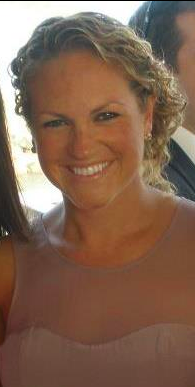by Joan F. Smith
 In college, I started my “literary career” (I use this term very loosely) by being selected, along with two other students, to be the editorial board of Providence College’s international literary journal, “The Alembic.” The three of us were responsible for choosing the final selections for the journal. We received thousands of submissions, though it’s more likely that we received tens of thousands of submissions. Each submission first went through a group of about 30 students, who were in a “literary editing” class. They voted on pieces as a class, which cut down on the final choices in a major way.
In college, I started my “literary career” (I use this term very loosely) by being selected, along with two other students, to be the editorial board of Providence College’s international literary journal, “The Alembic.” The three of us were responsible for choosing the final selections for the journal. We received thousands of submissions, though it’s more likely that we received tens of thousands of submissions. Each submission first went through a group of about 30 students, who were in a “literary editing” class. They voted on pieces as a class, which cut down on the final choices in a major way.
Although it was very time consuming, it was also a very teachable moment – more so than the majority of my courses were, in fact. I learned some very valuable things about what editors look at. And more importantly, I learned what not to do.
Now, I’m on the editorial board for the Penmen Review. It is an entirely different experience, but it’s one I value. For starters, it’s an online journal, which means that I need to think about submissions in a new light. It’s also phenomenal to have everything at my computer, rather than thousands of pages of marked-up material, paper clips, and folders taking up space.
I’ve also submitted work to various magazines. Some of it’s been rejected, but then again, some has been accepted. (Let’s face it. You don’t need to come to this blog to hear that rejection is a part of any writer’s life.) J. K. Rowling, for one, was rejected about a dozen times before the 8-year-old daughter of her future publisher changed the world. Pre-Potter, J. K. also has had every other writer-cliché happen to her. I’m pretty sure she typed up the series without electricity, walking uphill both ways.
Do:
- Review all submission guidelines. If your piece does not work for it, then do not submit it.
- Pay attention to each submission guideline. Some journals don’t want your name to appear on the page at all. Some journals request a word count directly on your work. (If it’s not specified, I’d say to include it.)
- Include a cover letter. In the cover letter, you should include the word count, genre, and title of your piece. Perhaps write why your work would fit well within the magazine.
- Include a third-person bio below your signature. You can point toward this in your cover letter: “I have pasted a brief biography, as requested, below.”
- Read each word of your work out loud. If I see a spelling error, there’s probably a 97 percent chance I wouldn’t take it.
- Start small. Because while it would be unreal to be a first-time writer published in the likes of “The Atlantic,” the odds are not in your favor. Remember that you can add every publication to your resume, C.V., and bio.
Don’t:
- Copyright your work. “This is the property of Joe Schmoe” stamped on the bottom of every page makes me think that you are paranoid. I’m not going to steal your work.
- Have an extensive heading on your work. For example, if you wrote the piece for school, remove the professor’s name and other identifying information from there.
- Stray from the beauty of “said” and “asked.” If your character is sneering, chuckling, growling, chortling, or any of the like, it’s probably time for a simple rewrite.
- Submit multiple publications to places that do not accept multiple publications. You never know whose toes you might be stepping on, and networking is important in every industry.
- Forget the importance of tense. Flipping back and forth from past to present is a big no-no.
- Name people we aren’t supposed to care about.
For example, check out the following. The reader is swarmed with names (and a tense change) in a mere 39 words.
“Who wants breakfast?” asked Dave Johnson.
“I do,” said his 75-year-old mother, Anna, glancing over at him.
They sat at the small bar in their kitchen, where Dave’s father, Joseph, used to enjoy his breakfast every morning.
Here’s how I might revise that one:
“Who wants breakfast?” he asked Dave Johnson.
“I do,” said his 75-year-old mother, Anna, glancing over at him.
They sat at the small bar in their kitchen, where Dave’s father, Joseph, used to enjoy his breakfast every morning.
——————–
Joan F. Smith is a college professor, fiction and memoir writer and competitive dance instructor. She received her M.F.A. in Creative Writing from Emerson College and two B.A. degrees in English and Social Science from Providence College. Currently, she is working on writing a new novel; she’s also editing a children’s chapter book.
Joan’s favorite movie character is either Veruca Salt or John Coffey in “The Green Mile.” She practices the mantra “sweat every day.” In her spare time, she shops, reads, pretends to love cooking, designs jewelry and works on renovating her home, which is just south of Boston. You can read her blog at https://www.jfsmithbooks.com/blog.
Category: